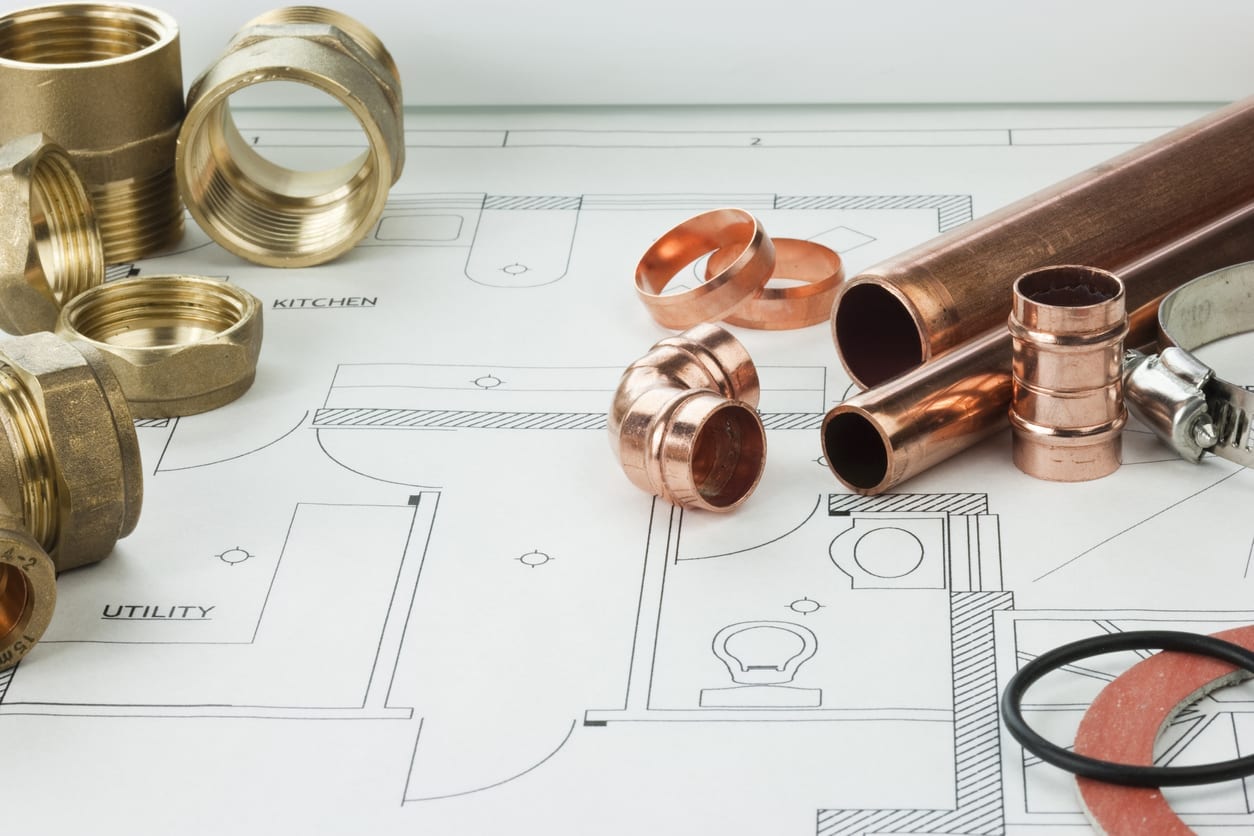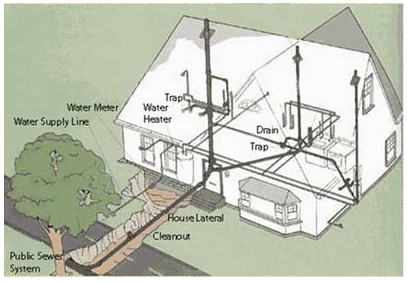How do you actually feel with regards to Understanding Your Home's Plumbing Anatomy?

Comprehending exactly how your home's pipes system functions is necessary for every homeowner. From delivering tidy water for alcohol consumption, food preparation, and showering to safely removing wastewater, a well-maintained plumbing system is crucial for your family's health and convenience. In this comprehensive guide, we'll explore the intricate network that makes up your home's pipes and deal ideas on upkeep, upgrades, and handling typical concerns.
Intro
Your home's plumbing system is greater than just a network of pipelines; it's an intricate system that ensures you have accessibility to tidy water and reliable wastewater elimination. Knowing its parts and exactly how they interact can assist you avoid costly fixings and ensure every little thing runs efficiently.
Basic Components of a Pipes System
Pipes and Tubing
At the heart of your pipes system are the pipes and tubes that bring water throughout your home. These can be made from numerous materials such as copper, PVC, or PEX, each with its benefits in terms of durability and cost-effectiveness.
Components: Sinks, Toilets, Showers, etc.
Components like sinks, bathrooms, showers, and tubs are where water is used in your house. Comprehending just how these fixtures attach to the plumbing system aids in diagnosing issues and intending upgrades.
Shutoffs and Shut-off Points
Shutoffs manage the circulation of water in your plumbing system. Shut-off shutoffs are essential throughout emergencies or when you require to make repair services, allowing you to separate parts of the system without interfering with water flow to the whole house.
Water Supply System
Main Water Line
The major water line connects your home to the metropolitan supply of water or an exclusive well. It's where water enters your home and is distributed to numerous components.
Water Meter and Pressure Regulatory Authority
The water meter actions your water usage, while a pressure regulator guarantees that water moves at a safe pressure throughout your home's pipes system, preventing damage to pipelines and fixtures.
Cold Water vs. Hot Water Lines
Comprehending the difference between cold water lines, which supply water straight from the main, and hot water lines, which bring warmed water from the water heater, helps in fixing and preparing for upgrades.
Drain System
Drain Pipes Piping and Traps
Drain pipes carry wastewater away from sinks, showers, and commodes to the sewage system or sewage-disposal tank. Catches protect against sewer gases from entering your home and also trap debris that might trigger blockages.
Air flow Pipes
Ventilation pipes allow air into the drainage system, preventing suction that could slow drainage and create catches to vacant. Correct air flow is essential for keeping the honesty of your pipes system.
Relevance of Proper Drain
Making certain appropriate drain prevents backups and water damage. Routinely cleaning up drains and maintaining traps can avoid costly repair work and prolong the life of your plumbing system.
Water Heater
Types of Hot Water Heater
Hot water heater can be tankless or typical tank-style. Tankless heating systems warm water on demand, while storage tanks keep heated water for immediate use.
Just How Water Heaters Attach to the Pipes System
Comprehending just how water heaters connect to both the cold water supply and hot water circulation lines aids in identifying problems like inadequate hot water or leaks.
Upkeep Tips for Water Heaters
On a regular basis flushing your water heater to get rid of debris, inspecting the temperature setups, and examining for leaks can prolong its lifespan and enhance power effectiveness.
Common Pipes Issues
Leakages and Their Causes
Leakages can happen due to aging pipelines, loose installations, or high water pressure. Resolving leakages quickly protects against water damages and mold growth.
Obstructions and Blockages
Obstructions in drains and commodes are typically caused by flushing non-flushable things or a buildup of oil and hair. Making use of drain displays and being mindful of what decreases your drains pipes can avoid clogs.
Indications of Pipes Problems to Look For
Low tide pressure, sluggish drains, foul odors, or uncommonly high water bills are indications of possible pipes problems that must be addressed without delay.
Plumbing Maintenance Tips
Routine Examinations and Checks
Schedule annual pipes evaluations to capture concerns early. Look for signs of leaks, corrosion, or mineral accumulation in taps and showerheads.
DIY Maintenance Tasks
Simple tasks like cleansing tap aerators, checking for bathroom leaks utilizing color tablets, or protecting revealed pipelines in chilly environments can prevent major pipes problems.
When to Call a Specialist Plumbing
Know when a pipes concern requires professional experience. Attempting intricate repairs without appropriate understanding can bring about even more damage and higher repair service prices.
Upgrading Your Plumbing System
Reasons for Upgrading
Upgrading to water-efficient fixtures or replacing old pipes can enhance water quality, decrease water costs, and boost the value of your home.
Modern Pipes Technologies and Their Benefits
Discover innovations like clever leakage detectors, water-saving commodes, and energy-efficient hot water heater that can conserve money and decrease environmental impact.
Cost Considerations and ROI
Determine the upfront costs versus long-term savings when taking into consideration pipes upgrades. Lots of upgrades spend for themselves via minimized energy expenses and fewer repairs.
Ecological Effect and Conservation
Water-Saving Fixtures and Appliances
Mounting low-flow taps, showerheads, and bathrooms can considerably reduce water usage without sacrificing efficiency.
Tips for Minimizing Water Usage
Simple behaviors like taking care of leakages immediately, taking shorter showers, and running complete tons of laundry and recipes can preserve water and lower your utility costs.
Eco-Friendly Pipes Options
Consider lasting plumbing materials like bamboo for floor covering, which is durable and eco-friendly, or recycled glass for kitchen counters.
Emergency Preparedness
Steps to Take During a Plumbing Emergency
Know where your shut-off shutoffs lie and just how to switch off the water supply in case of a ruptured pipeline or major leakage.
Importance of Having Emergency Situation Contacts Helpful
Maintain contact details for local plumbings or emergency solutions readily offered for quick action during a pipes crisis.
Do It Yourself Emergency Fixes (When Applicable).
Short-lived repairs like making use of air duct tape to spot a dripping pipe or putting a bucket under a trickling faucet can minimize damages till an expert plumber gets here.
Conclusion.
Understanding the composition of your home's plumbing system equips you to keep it efficiently, conserving time and money on repairs. By complying with normal maintenance regimens and staying notified concerning modern pipes technologies, you can guarantee your pipes system operates effectively for several years to find.
HOW YOUR PLUMBING SYSTEM WORKS
Which Pipes Do What?
- Blue lines = fresh water supply entering the building
- Red lines = hot water supply entering the building
- Grey lines = pipes carrying waste away from the building and venting pipes carrying gases away from the building (through the roof)
YOUR MAIN PLUMBING SYSTEMS
There are two main plumbing systems that support your home s basic plumbing needs one that brings clean water into your home, and one that sends dirty water away from your home. Connected to the toilet, bath, shower, and other faucets in your home, these two systems keep your water flowing in the right directions.
ACCESSING FRESH WATER
Fresh and clean water is brought into your home through the main water supply line . Filtered through one pipe, this water is pressured to flow into the various fixtures in your home at any given time.
This water can be sourced from a well located on your property, a pond or river (mostly cottages), or, as in most cases, from the city s municipal water treatment centre. However, it is important to note that water that is untreated, such as the water siphoned from ponds or rivers, may not be safe to drink. Personal water supplies always need to be treated for hardness and contaminants before consumed.
MUNICIPAL WATER SUPPLIES
- Improve taste and odour
- Remove sediment
- Eliminate hardness
- Reduce chlorine
COLD WATER SUPPLY VS. HOT WATER SUPPLY
Cold water flows into your home or building through the service line, which then distributes hot or cold water to your fixtures. This line is most commonly run through a central column that runs floor to floor. Hot water runs in short and straight pipes as the longer the pipeline, the more heat that will be lost in the transfer. Having shorter pipes also allows residents to access hot water more quickly.
WASTE WATER SYSTEM
Your wastewater system is divided into two parts pipes that send wastewater away from your home and venting pipes that send sewer gas away from your home. Sewage water travels through pipes that flush the water and waste towards local sewers that are operated and managed by your city or town. Most sewer systems rely on gravity to move the wastewater to where it needs to go.
The further away from your toilet or sink, the larger wastewater pipes become. This allows for waste to be disposed of from various parts of your home or business at once without pipe blockages. The angle and flow of these pipes are also essential for keeping your waste pipes clear of build up.
https://harrisplumbing.ca/how-your-home-plumbing-system-works/

I was made aware of that write-up about Plumbing Installation 101: All You Need to Know from an acquaintance on a different blog. Sharing is caring. One never knows, you may be doing someone a favor. Many thanks for going through it.
More Details
Comments on “The Basics to Your Home's Plumbing System Anatomy”